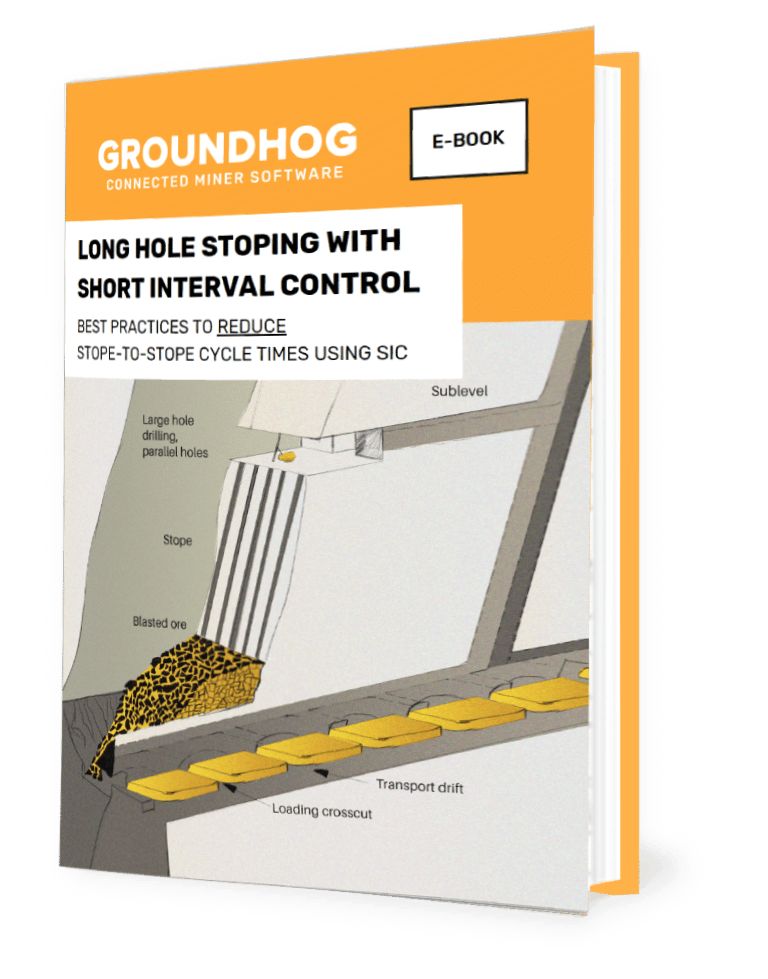In this post, we are going to look at is more practical aspects of my digitization as from a road mapping standpoint and from a execution standpoint. The big picture in the industry today is we are having lower yields, especially here in Australia. We have pretty big labor shortages. And then mining is always experiencing commodity price pressures. And then we always go in these super cycles. So when you talk to a lot of the thought leaders in the industry, the long term trend is there’s only one way to get out of all of these resource constraints, resource as a labor constraints and so on. And automation is being seen as magic pixie dust that you can just spray on that labor shortage problem so that you can still extract or add lower costs. Now the good thing about automation is that folks like <inaudible> is being quoted as saying, “Automation applied to efficient operations, amplifying the efficiencies. However, automation applied to an inefficient operation will magnify the inefficiencies. ” So I mean, before you go in and fully automate, you got to make sure that things are done. And when you look at C-suite expectations from the CEO, CRO, CIO levels, it sort of reflects this picture that we found on the internet where corporate basically always says automate now. Whereas the folks at the sites don’t necessarily know how, because they don’t have the experience in doing these sorts of things. What we see is before you get automation, you have to digitize your operation, as well as transform the operation to be able to use all the federated data that you now have because of this digitization across all the kinds of activities you perform, be it mind planning, geology, survey, operations, development, and even safety. So digitization we see as a stepping stone to automation. So typically what happens is when a company large or small decides to go digital, they create these digital transformation teams. They bring in consultants. They bring in software developers. They bring in system integrators, and they also hire product owners and product managers to go out and do this big digital transformation. They also talk about building data lakes using power BI reports and so on. And typically, the vision for the additional transformation team is laid out as, “Hey, use sensors wherever you can to get data directly off of the machine. Feed it into your mind planning models, then do the execution, then track. ” Right? And in their mind when the product owners and product managers develop the solution, at least develop the architecture, the vision they have is some sort of AI, some sort of ML goes out and imports your long term mind plan and generates a shift schedule for you that through telemetry units then sends these tasks out to a particular piece of equipment that then goes out and does the mining for you. And before we get there, we’ll do sort of bite size enhancements. Now that everything is digital, and when the AI generates the schedule, then the supervisor still uses their hunches to update the plan based on what was done the previous shift. And you make adjustments to the shift schedules. And then all of these plans get distributed to the remote operation center. The mind control rooms, the line out screens at the wash base and also to supervisor tablets and tablets that get installed on equipment. And then supervisors basically use everything digital. They use RTLS to locate equipment underground, both from getting the button seat faster standpoint as well as from a safety standpoint to do collision alerts and collision avoidance systems. And there’s various phases of automation, digitalization and automation. One being where operators update task. In the minds where you don’t have the telemetry systems or if you don’t have the wireless infrastructure to pull data off of the machines, then you have operators update these tasks and generate EPLs. And then an op center typically monitors the progress and makes adjustments. That is, if an equipment broke down at a slope, then which other piece of equipment needs to be sent out. Those sorts of mind control decisions are still done either at a supervisor level or at a mind control level. Then the operators lock downs and delays or the downs come automatically from the piece of equipment. And then every two or three hours you reprioritize what needs to be achieved for that particular shift. And then you generate shift logs for the next shift to use. And then you send this information back into your mind planning system and your safety system. And then from a corporate standpoint, you pull in on the data through Power BI or Tableau or one of the other recording infrastructures so that you can report up the chain all the way to your shareholders. This is all nice and easy until s**t hits the fan, right? And nine times out of 10 s**t always hit the fan. And typically what we are seeing is it’s not a technology problem. It’s not a technology problem. There are three things that always need to happen for successful digital transformation. Number one is you have to have the right people in place to drive the right kinds of transformations and process changes. And you also need to have the right technology to implement all these changes. Operate on these things that they can do all of this in three months, but from a practical standpoint, you’re looking at either a 12 or 18 month journey. That’s reality. We’ve been there, done that. And I have this quote that I live by, right? Everybody has a plan until they get punched in the face. So these digital transformation teams need to be adaptable. And typically corporate, the CEOs and CXOs expect all of these to be done in three to six months. And when the results don’t show, the first thing they do is they can that digital transformation team and go back to old pen and paper. You have to have that sustainability in place to actually drive transformation. Digitization is the easy part, is a transformation that’s a harder part. And for that, based on 10 years of working with mines, what we found is big bang approaches almost always fail. And like Ed mentioned before, you have to do this in bite size chunks. You have to do this in bite size chunks. The supervisor’s life changes the most. When we are talking digital transformation and pulling data in, you are changing people’s lives and the guy or the people whose life changes the most is actually the supervisor. So they need to be retrained, they need to be brought along in this digital transformation process. You have to check whether they’re ready and whether they’re capable. Also, because not everybody is capable, and I have experiences that I can share over a point of view. You also need to have a site champion. Expecting everything to be done out of corporate in <inaudible>. You have to have a site lead or multiple site leads that actually engage in the entire transformation process. The other thing to note is miners do not trust consultants in suits and ties. They don’t. You need to look like them and talk like them and think like them, right? User counsels are a great way of increasing engagement. You have to have a competent and a responsive IT team and you have to communicate, communicate, communicate up and down the management chain. And when you talk digital transformation, you also got to walk that walk. Don’t give up after that six month mark when you’re not seeing results just yet and hold people accountable and celebrate with even the small wins. There is a maturity model that the GMG, the Global Mining Guidelines Group has come up with where level one is a basic paper-based process to a highly automated level six kind of system where you have AI ML algorithms that automate task allocations to haul trucks and so on. Now, if anybody here tells you that they do level six, please let me know because they’re smoking some really high quality weed that I would like to get some. What we have is we help mines go from level one all the way through level five using our off center platform, and our whole budget applications are built on top of them. I’m out of time. We are right there in the E19 booth. We would love to give you hands on demos. Unlike videos, we will do hands on demos for you. So please come on by. Again, thank you for your time, I really appreciate it.
Leading mines into the Digital Revolution
Products
Mine Control & Ops
- Short Interval Control
- Open Pit FMS
- Underground FMS
- Supervisor App
- Shift Boss App
- Mine Manager App
- Crew Lineout
- Explosives Inventory
- Construction Crew App
IIoT
- High Precision GPS
- Payload Monitors (1-2%)
- Fuel Sensors
- TPMS (Tyre Pressure Monitors)
- UG Real Time Location Tracking
- Collision Alerts
Maintenance
Services
Integrations
- CAT VIMS
- Komatsu VHMS
- Deswik
- Vulcan
- Propeller
- acQuire
- SAP
- JD Edwards
- Oracle Financials
Downloads
Android Apps
- Open pit FMS
- Underground FMS
- Supervisor SIC
- Mine Manager
- Geologist
- Maintenance Supervisor
- Maintenance Technician
- Open Pit Geo-fences
- LMS
- rapidInspect
USA
1525 McCarthy Blvd, Suite 1133,
Milpitas, CA - 95035
India
No. 1-98/K/16, Hitech City Road, Madhapur, Hyderabad, TS 500081
Australia
Level 29, Forrest Centre 221 St Georges Terrace, Perth. WA 6000
We are on a mission is to digitize and automate every mine.
Because we strongly believe that a digitally connected mine produces more tons, faster and SAFER.
Copyright © 2010 — 2022 rapidBizApps d.b.a. GroundHog Apps


